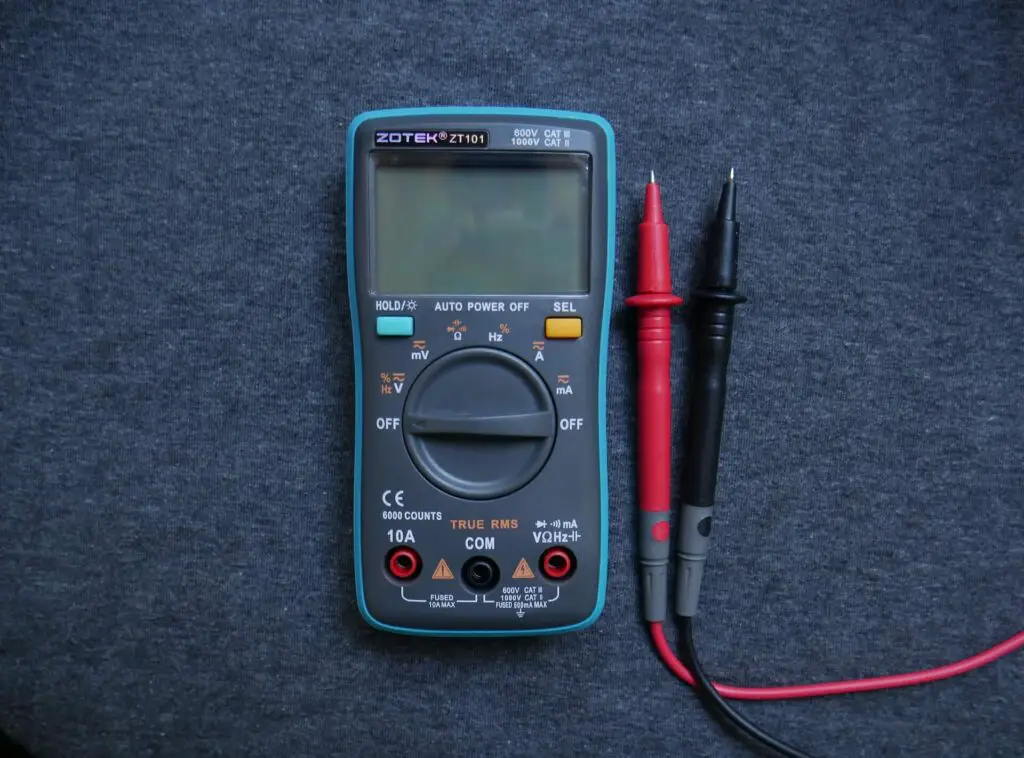So, do you want to know how to test blower motor resistor? What happens most often is that connectors fail, and the blower motor resistor starts causing issues with the car. The technology behind these resistors is designed in a way that the terminals can create resistance which causes them to become hot. When there is too much resistance where there shouldn’t be, the wire terminals scorch and then melt the connector of the blower motor.
Before you determine that this might be the case, you need to inspect the car. Find out how to tell if the blower motor is bad and how to test it in this article.
What Is a Blower Motor Resistor?
A blower motor resistor is an essential part of the vehicle’s air conditioning and heating system. It is an electrical component that controls the air in the passenger compartment. It functions by resisting flow and thus lowering current in the electrical circuits. Altering the speed of the blower motor’s fan is possible with a resistor. When there is more resistance, the fan will not spin fast, and the cabin will deliver less hot or cold air.
Many cars still rely on these resistors to control the electricity flow making it easier to change the speed of the fan. It’s important to mention that modern cars use a different solution for this. They have implemented an electric control module that regulates the speed of the fan. If you have an older used car, there is a greater chance that your heating and air conditioning system is regulated by a resistor.
A blower motor resistor doesn’t affect driveability like a spark plug or engine. But if you still have one in your car, you should still know what to do if it fails.
Signs That the Blower Resistor Has Failed?
Whenever something in the car malfunctions, such as a car thermostat, brakes, lights, water pump, fuel pump, a car battery, or my today’s subject, it shows signs. The blower motor resistor is always under pressure since it is setting the speed of the fan. Thus it can easily fail. The obvious signs will first show as issues with air conditioning or the heating system. There are a couple of symptoms you need to look out for. Here is how to tell if your blower motor resistor is bad.
There Isn’t Any Air Coming From the Car’s Vents
The blower motor resistor provides the blower motor with power. When there are issues with the resistor, the motor won’t get fed any power. Air pressure without the resistor won’t be produced so you will notice that there isn’t any air coming from the car’s vents.
When you notice this issue, the first thing that you can suspect is that the power has been cut off and the blower motor is left dry. I recommend taking your running test or simply asking for help from professional technicians.
Particular Settings Do Not Work
If you notice that some settings are not responding accordingly, something might be wrong. When the internal components of the resistor shut down, the blower motor will fail, and some functions or all of them will cease working. What might be at fault is the blower motor switch. But, knowing the right cause is only possible if someone experienced inspects the vehicle.
The Blower Motor Works Only on a Single Setting or Speed
Can your blower motor only produce hot air? Or perhaps it only produces a single speed. The resistor is failing for sure because it is solely responsible for the speed of the motor’s fan. A single fan speed that cannot be changed in any way is a clear sign. The blower motor will begin working properly only when the resistor has been replaced.
Why Does Blower Motor Resistor Malfunction?
I have already mentioned that the blower motor resistor is under constant pressure. The electricity is non-stop flowing through the resistors. When the driver changes the setting of the fan, the voltage will get altered quickly. It’s not a surprise that they can get worn out after a while. Here are the main reasons that can contribute to the resistors malfunctioning.
- Exposure to moisture and air leads to corrosion,
- Overheating – when the motor has difficulty moving as a result of worn bearings or jamming, the temperature of the resistor might rise dangerously high,
- Time and use – expected wear and tear

Here’s a Guide on How to Test Blower Motor Resistor?
A great thing about blower motor resistors is that you can do the testing all by yourself. However, it’s vital to know the key steps to correctly test the component. I’ll walk you through the entire process. This guide is appropriate for individuals who want to know how to test blower motor resistor in Silverado as well as those that want to know how to test blower motor resistor in Trailblazer.
First Step, Find the Fuse of the Blower Motor Resistor
Locate the resistor’s fuse in the car. There are two ways you can make this step a bit easier. The first is to read the car’s manual or watch some YouTube clips where the car of the same make and model are being tested. In case you cannot find the manual, the best thing to do is to search for it online and then download it.
Run a Test on the Fuse
Test whether the fuse is working or not. Do this with the help of the 12 Volt test light. It needs to be connected to the ground on one side and the fuse’s terminal on another side. Then, check to see whether the fuse is functioning adequately by watching closely the power that is on each terminal. Each one should indicate that everything is fine. But, if you notice that there isn’t any power, the fuse is burnt.
Test the Resistor
Now it’s time to take out your blower motor resistor and test it by using the same 12 Volt test light. Don’t forget to unplug it before you begin testing because you don’t want to end up confusing other components in the climate control system.
Checking different speeds is key here. Adjust the resistor a couple of times to see whether it’s malfunctioning at a particular speed. So, how can you detect that there is an issue? It’s quite simple. The blower motor will lose power at a particular speed. The resistor is faulty in case there is no power at low speeds.
Another important thing to bear in mind is that there might be issues with a switch. This is connected to higher speeds. During the testing, you might notice that there is no power. But if a higher speed is in question, the switch is at fault here. The reason for this is the fact that the switch gives power to your blower motor at higher speeds.
Run a Test on Your Blower Motor Ground
A blower motor depends on specific grounds that are attached to the body of the car, and a faulty blower motor can result from an issue with this part of the car. The ground is also susceptible to gradual wear and tear. When this occurs, there will be interferences with the blower motor’s function. Have a look at the ground before determining whether there is an issue with the resistor or not.

How to Test a Blower Motor Resistor With a Multimeter?
If you prefer to do the test with a multimeter instead of a test light, use the following instructions.
First, put one lead of your multimeter on the resistor’s terminal 1. Then take your other lead and connect it to terminal 2. Make sure that you check the specifications that can be found in the manual. If you detect that the multimeter is showing infinity and the circuit trains open, there is something wrong with the resistor.
Next, take the lead that is on terminal 2 and place it on terminal 3. Check whether the specifications correlate with the reading. In case the circuit is again open and the multimeter is displaying infinity, the resistor is faulty.
The same thing needs to be done when you place the lead on terminal 4 from terminal 3. If the same reading occurs, then you should replace the blower resistor.
With a multimeter, it’s easy to gain a better understanding of how the current and resistance function.

The Blower Motor Resistor Is Bad – Now You Need to Replace It
Do you want to find a way to do the job on your own? Replacing the resistor doesn’t require effort and tools like when replacing a valve stem or changing a flat tire. One might say that it is simple like changing a tail light. You will first need to find a way to access it. It might be behind your glove compartment or under the hood of the car.
If it’s behind the glove compartment you will need to remove the entire compartment. The good news is that with some cars you won’t need to use any tools. A gentle push on the sides of the compartments and lowering the door will do the trick. But, for models such as the 2010 Tacoma, you will need to get your toolbox.
Sometimes it is simpler to take the harness off first, depending on where your blower motor resistor is. After you’ve disconnected the wiring harness and removed all screws, the device will come out of its housing.
Check whether your brand-new resistor is equipped with a foam or rubber gasket material on the outside. Then, remember to get rid of the old gasket as well. Before finishing this step, inspect whether the speeds of the blower motor fan are functioning properly.
Finally, simply attach your wiring harness and tighten all the screws before reinstalling your resistor.
Where Can You Buy a Blower Motor Resistor?
There are numerous one-stop shops where you can get a blower motor resistor at a reasonable price. However, you can even order online. Amazon has an incredible selection of blower motor resistors. Check the table below with the prices of some:
| Type | Price |
| RU-730 Blower Motor Resistor | $27.79 |
| HVAC Blower Motor Resistor HIt With Harness that fits Chevy Silverado, Taho, Trailblazer, Suburban, and Avalanche | $29.99 |
| Dorman 973-401 HVAC Blower Motor Resistor Kit Compatible with Select Models | $25.72 |
| SFYATO, HVAC Fan Blower Motor Resistor Compatible with Ford Escape, Explorer, and Expedition | $28.99 |
How Much Will It Cost For a Mechanic to Replace It?
You won’t have any problems driving the car during the night and day or driving it off-road with a blower motor resistor that is not working properly. But, if you don’t want to replace it yourself, it’s best to have someone reliable and experienced do it for you. A trip to the mechanic because of faulty resistors may cost you between $50 and $150. Of course, the price depends on where you are located and how much you will have to pay for the device.

Ready to Test the Blower Motor Resistor on Your Own?
When you start noticing symptoms of a faulty blower motor resistor, such as lack of air coming from the vent or a malfunctioning setting, it’s time to see whether you’ll need to eventually replace the device. There are two methods you can use to run the test – one is with a 12 Volt test light, and the other is with a multimeter. Use the one that is most suitable for you. Once you determine what the issue is, you can replace it on your own or call up the mechanic to have a new one installed.








